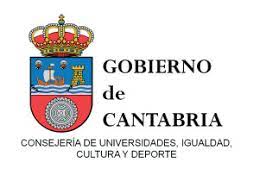Graphic image and public projection of Benito Pérez Galdós in the press at the beginning of the 20th century
DOI:
https://doi.org/10.55422/bbmp.552Keywords:
Benito Pérez Galdós, Journalism, Illustrators, Caricature, Engravings, Iconography, Public imageAbstract
Due to the importance, even in his time, of Benito Pérez Galdós, caricatures and iconographies were dedicated to him to honor him, like many other authors. According to Mainer, this supposes belonging to a canon and a positive aspect in public projection, despite the fact that the figure is treated with humor and some myth. Even at the beginning of the 20th century, caricatures and engravings were the only images that were seen in the press of the authors, the only thing that the public received. Galdós was caricatured according to his literary and critical work and according to his ideology, although the satirical press also used his image humorously. Thus, this article reviews the different graphic and pictorial representations of the Canarian writer in the press at the end of the 19th and beginning of the 20th centuries, which show how he was seen at each moment, according to his publications and the tastes of the public.
Downloads
Publication Facts
Reviewer profiles N/A
Author statements
Indexed in
- Academic society
- Sociedad Menéndez Pelayo
- Publisher
- Sociedad Menéndez Pelayo
Global Statistics ℹ️
|
145
Views
|
143
Downloads
|
|
288
Total
|
|
References
Abreu L, Daniel (2005): “El papel de la caricatura en la estrategia de oposición al primer gobierno de Antonio Guzmán Blanco (1870-1877)”. Extramuros. 8, 23: 169-184.
Azorín (1912): Lecturas Españolas. Madrid: Imprenta de la Revista de Archivos (Madrid, Agrupación Nacional del Comercio del Libro, 1974).
Le Bigot, C. (1996): “Los retratos en La Ilustración Española y Americana: tretas y tramoyas de un género”. La prensa ilustrada en España. Las Ilustraciones, 1850-1920, Coloquio Internacional-Rennes. Montpellier, IRIS, Université Paul Valéry: 145-161.
Esteva-Grillet, Roldán (1992): El dibujo en Venezuela: estudio y antología de textos. Caracas: Fundarte / Alcaldía de Caracas.
Francés, José (1930): La caricatura. Madrid: Compañía Iberoamericana de Publicaciones.
Fuentes, Juan Francisco (1994): “Clase media y bloque de poder en la España de la Restauración”. Revista de Estudios Políticos (Nueva Época). 85. 7-8: 121-141.
Laguna Platero, Antonio (2003): “El poder de la imagen y la imagen del poder. La transcendencia de la prensa satírica en la comunicación social”. Revista científica de información y comunicación. 1: 111-132.
Mainer, Jose-Carlos (2007): “Apuntes para un marco [con Bagaria dentro]”. En Bagaría en El Sol. Política y humor en la crisis de la
Restauración, Madrid, Fundación Mapfre, Colecciones Mapfre (Catalogo de la Exposición).
Montesinos, José F. (1980): Galdós. I. Madrid: Ed. Castalia.
Oleza, Juan (2000): “Galdós y la ideología burguesa en España: de la identificación a la crisis”. Alicante: Biblioteca Virtual Miguel de Cervantes.
Ortiz-Armengol, Pedro (2000): Vida de Galdós. Barcelona: Crítica.
Pease, Allan (1988): El lenguaje del cuerpo. Barcelona: Paidós.
Pérez Galdós, Benito (1985): Fortunata y Jacinta. Madrid: Cátedra.
Pérez Vila, Manuel (1979): La caricatura política en el siglo XIX. Caracas: Cuadernos Lagoven.
Pompeu Fabra, Fernando (2007): Comunicación estratégica I, Gardners Book.
Villacorta Baños, Francisco (1980): Burguesía y cultura. Los intelectuales españoles en la sociedad liberal, 1808-1931. Madrid: Siglo XXI de España Editores.
Downloads
Published
How to Cite
Issue
Section
License
Copyright (c) 2022 Carmen Luna Sellés

This work is licensed under a Creative Commons Attribution-NonCommercial 4.0 International License.







